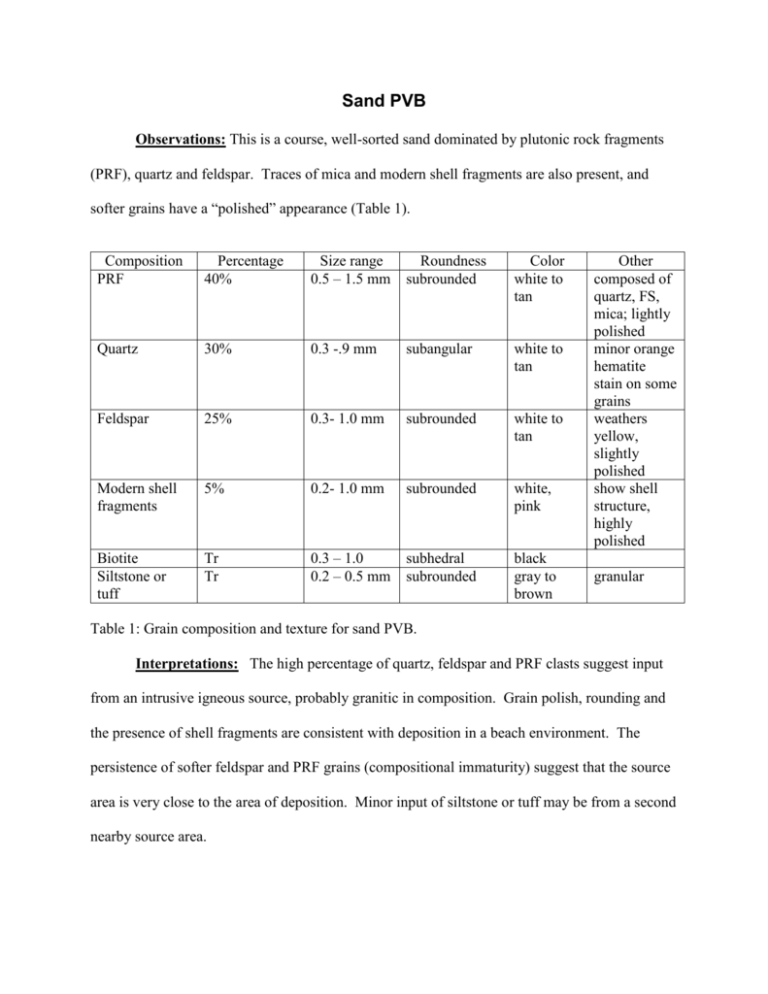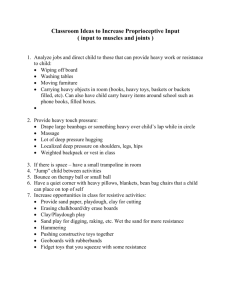Unknown #2
advertisement

Sand PVB Observations: This is a course, well-sorted sand dominated by plutonic rock fragments (PRF), quartz and feldspar. Traces of mica and modern shell fragments are also present, and softer grains have a “polished” appearance (Table 1). Composition PRF Percentage 40% Size range 0.5 – 1.5 mm Roundness subrounded Color white to tan Quartz 30% 0.3 -.9 mm subangular white to tan Feldspar 25% 0.3- 1.0 mm subrounded white to tan Modern shell fragments 5% 0.2- 1.0 mm subrounded white, pink Biotite Siltstone or tuff Tr Tr 0.3 – 1.0 0.2 – 0.5 mm subhedral subrounded black gray to brown Other composed of quartz, FS, mica; lightly polished minor orange hematite stain on some grains weathers yellow, slightly polished show shell structure, highly polished granular Table 1: Grain composition and texture for sand PVB. Interpretations: The high percentage of quartz, feldspar and PRF clasts suggest input from an intrusive igneous source, probably granitic in composition. Grain polish, rounding and the presence of shell fragments are consistent with deposition in a beach environment. The persistence of softer feldspar and PRF grains (compositional immaturity) suggest that the source area is very close to the area of deposition. Minor input of siltstone or tuff may be from a second nearby source area. Additional information about the sand: PRB stands Puerto Vallarta Beach sand. This is a good example of a BEACH SAND (POLISHED), from a PLUTONIC SOURCE. This sand was collected in a sandy inlet with granitic sea stacks nearby. Mountainous highlands to the east have an eroded granitic core. The high degree of sorting and grain polish are typical of high energy beach sands. “Siltstone” in this sample may really be tuff from nearby volcanic flows.











